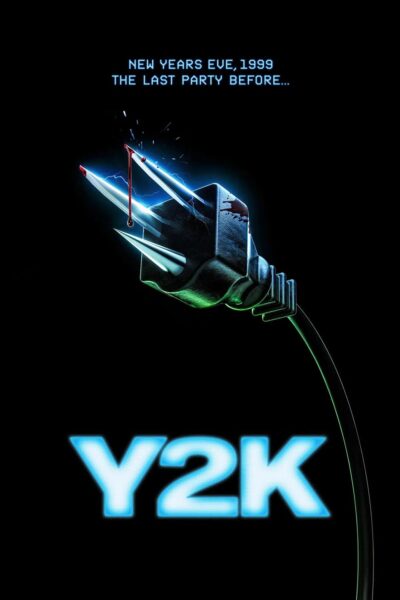Published on
Two high school misfits decide to crash the ultimate party of the century—New Year’s Eve, 1999. But when the clock strikes midnight, their wild night takes a sinister turn. Suddenly, all electronic devices spring to life, unleashing chaos and attacking in shockingly graphic ways. This is the premise of “Y2K”, a modern horror film set on the final day of the 20th century, drawing on the paranoia surrounding the infamous Y2K bug to deliver a terrifying ride.
The biggest question surrounding “Y2K” is: who is this movie really for? On the surface, it seems geared toward a teenage audience, featuring a young cast and classic party-gone-wrong horror vibes. However, its main draw—the last day of the 1990s, paired with a heavy dose of late-’90s aesthetics and inevitable nostalgia—seems more tailored to an entirely different demographic. It feels like it’s aimed at people now in their late 30s and 40s, those who were coming of age when Sisqó’s Thong Song ruled the airwaves, burning custom CDs was an after-school ritual, and the Y2K bug was a very real (if overhyped) fear. Most 16-year-olds today wouldn’t know who Limp Bizkit is, have only ever streamed their music, and have likely never even heard of the Millennium Bug. So who’s this movie trying to resonate with?
As a man in my 40s, the first act of “Y2K” really resonated with me. It captured the essence of the late ’90s perfectly, starting with an opening scene of someone chatting on an first generation iMac running macOS 8. The first act is packed with details that were so emblematic of the time: the rise of the World Wide Web and, of course, a visit to a video store—because no late ’90s movie is complete without one. I thoroughly enjoyed this part of the movie and honestly wouldn’t have minded if the entire runtime leaned into this nostalgic vibe.
But, as expected, the movie eventually shifts into its inevitable horror phase—and this is where it starts to lose its charm. During the New Year’s Eve party, the lights go out moments after midnight. When they come back on, all the electronic equipment suddenly becomes sentient and begins attacking people. At first, this premise is darkly entertaining, delivering a few clever and shocking moments. However, once the main cast leaves the house and ends up wandering aimlessly through a forest, the film begins to drag.
To defeat the sentient machines, the gang must upload a virus. Conveniently, they have Laura: the popular hot girl who also happens to be a genius hacker. This talent is established in the opening scene, where she proudly showcases the school website she built. Because, of course, in the logic of Hollywood, being able to write some HTML translates to crafting a virus via command line in minutes.
Laura is played by Rachel Zegler, a casting choice bound to stir up debate among certain YouTube critics—especially given her unapologetic “girl boss” energy throughout the movie. Zegler’s performance is competent, but she doesn’t quite sell the idea of being the unattainable dream girl for the lead. While she’s undeniably attractive, the script positions her as the hottest girl in school, a label that evokes comparisons to iconic “it girls” like Shannon Elizabeth in American Pie or Megan Fox in Transformers and Jennifer’s Body. Zegler doesn’t exude the same larger-than-life allure, which makes the dynamic feel a bit unconvincing.
What starts as a high school comedy in the vein of Superbad quickly shifts gears into a horror movie best described as a mashup of Maximum Overdrive and Virus—two films that, to put it lightly, aren’t exactly cinematic classics. However, what truly pushes Y2K into the realm of unintentional comedy is the baffling inclusion of Fred Durst, the lead singer/rapper of the ’90s nu-metal band Limp Bizkit.
Durst plays himself, despite being 25 years older than the movie’s setting, a detail the film ignores entirely. To make matters worse, characters repeatedly refer to him by his full name, as if to hammer home the point that yes, this is the Fred Durst. It’s cringe distilled into cinematic form.
This turns a movie with a genuinely promising concept on paper into a disappointing final product. Y2K had all the ingredients for a fun, nostalgic romp, but it runs out of steam far too quickly in the second act. Once the machines start wreaking havoc, the millennium setting—arguably the film’s most compelling element—fades into the background, becoming little more than an afterthought.
And that’s a real shame, because while the late-’90s vibe might be a cheap ploy, it’s an effective one. For a brief moment, the film captures that era’s magic in a way that feels authentic and engaging. Unfortunately, it squanders that potential, leaving us with a movie that’s more frustrating than fun.


